Dykes
Type of resources
Topics
Keywords
Contact for the resource
Provided by
Years
Formats
Representation types
Update frequencies
-
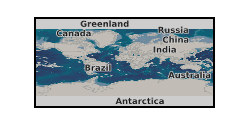
Data on the average aspect ratio (length/width) and average length of plagioclase grains in dykes and sills, used to demonstrate that the solidification regime is a function of the orientation of tabular intrusions. The data are written up, with publication expected in Journal of Petrology.
-
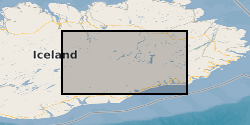
The dataset contains 3-component seismic data from seismometers deployed for one year Sept 204-August 2015 following the dyke intrusion from Bardarbunga which led to a 6 month long eruption at Holuhraun. The data is in miniseed format, archived at SEIS-UK and IRIS. The locations of all the microearthquakes we have identified from this data are published in Supplementary Information of Ágústsdóttir et al. (2016) [approx. 31,000 events from the Bardarbunga dyke], in Greenfield et al. [approx. 70,000 events from the Askja-Herðubreið area], and in Hudson et al. (2017), where they are publicly available for download. Ágústsdóttir, T., Woods, J., Greenfield, T., Green, R. G., White, R. S., Winder, T., Brandsdóttir, B., Steinthórsson, S. & Soosalu, H. (2016). Strike-slip faulting during the 2014 Bárðarbunga-Holuhraun dike Intrusion, central Iceland. Geophysical Research Letters, plus Supplementary Information, 43, 1495-1503, doi: 10.1002/2015GL067423 Greenfield, T., White, R. S., Winder, T. Ágústsdóttir, T. Seismicity of the Askja and Bárðarbunga volcanic systems of Iceland, 2009-2015, Journal of Volcanology and Geothermal Research, submitted 2017. Hudson, T. S., White, R. S., Greenfield, T., Ágústsdóttir, T., Brisbourne, A. & Green, R. G. (2017). Deep crustal melt plumbing of Bárðarbunga volcano, Iceland, Geophysical Research Letters, 44, doi: 10.1002/2017GL074749
-
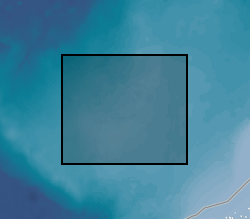
Fault analyses used to estimate underlying dyke properties, imaged in 3D seismic reflection data. The seismic reflection data are located offshore NW Australia and image a series of Late Jurassic dykes and overlying dyke-induced normal faults; these structures occur within a sedimentary basin and are now buried beneath several kilometres of rock. The specific seismic reflection dataset used for this study so far is the Chandon 3D survey, which is freely available through https://www.ga.gov.au/nopims. Other 3D seismic surveys (e.g., Glencoe) near Chandon will be used in due course to extend the study area. Analyses of these faults uses an array of point pairs, defined by X, Y, and Z co-ordinates, that mark where certain sedimentary beds are intersected by the fault in its footwall and hanging wall. Mapping of these points every 125 m along each studied fault, for 11-14 sedimentary horizons, was conducted using Petrel seismic interpretation software. From the footwall and hanging wall point pairs, the throw, heave, displacement, and dip of each fault was calculated. By measuring distances between corresponding point pairs on opposing faults, graben width properties and estimated down-dip fault continuations were calculated. The expression of dyke-induced faults observed at the surface in active volcanic areas is often used to estimate dyke location, thickness (expected to roughly equal the heave on overlying faults), and upper tip depth (expected to occur where overlying, oppositely dipping faults meet; i.e. the point of the ‘V’). This study represents the first time natural dyke-induced faults and underlying dykes have been imaged in 3D and quantitatively studied. The dataset presented here allows hypotheses concerning relationships between dyke-induced fault geometries and dyke properties to finally be tested, and provides insight into normal fault kinematics; this will be useful to structural geologists and volcanologists.
-
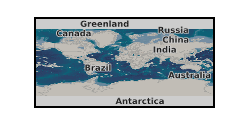
Measurements of the shape and size of plagioclase and olivine grains in a suite of dolerite dykes and sills. The olivine data refer to the family of sills forming the Little Minch Sill Complex where exposed on the Isle of Skye, while the plagioclase work also includes a range of sills and dykes from all over the world. Measurments of dihedral angles at junctions between two grains of plagioclase and one of pyroxene, again in dolerites from dykes and sills, and also from the Rustenburg Suite of the Bushveld Layered Intrusion in South Africa.
-
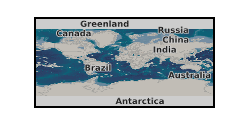
These data consist of spatial and temporal datasets for 11 different small-scale laboratory experiments of fluid-driven fractures, described in the paper Up, down, and round again: the circulating flow dynamics of flux-driven fractures (Chalk and Kavanagh, accepted in Physics of Fluids, February 2024). These experiments, conducted at the University of Liverpool, are analogue models of natural fluid-driven fractures in glacial and magmatic settings. Fractures were created by injecting water or silicone oil into transparent gelatine at a constant rate. The total experimental data set consists of 11 different experiments named: S1,S2,S3,S4,S5,W1,W2,W3,W4,SH,WH. S experiments involve the injection of silicone oil, and W experiments involve the injection of water. The raw data consist of a temporal series of jpegs from camera recordings of each experiment, located in the subdirectory "frames". For all experiments except for WH and SH, the data also consist of a temporal series of csv files containing spatial velocity data of the internal fluid flow, located in the subdirectory "PIV". These data are described in further detail in the metadata file in the raw data directory.
 BGS Data Catalogue
BGS Data Catalogue